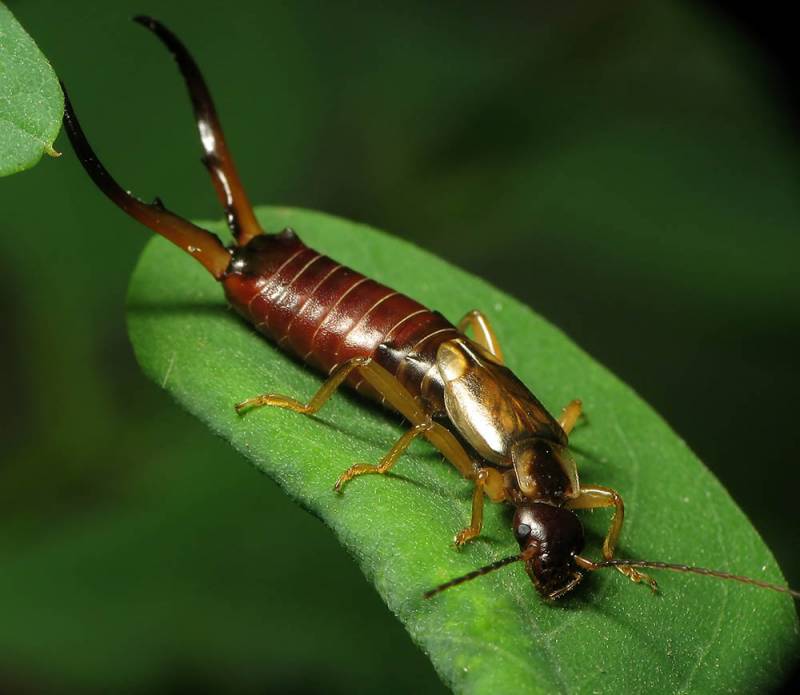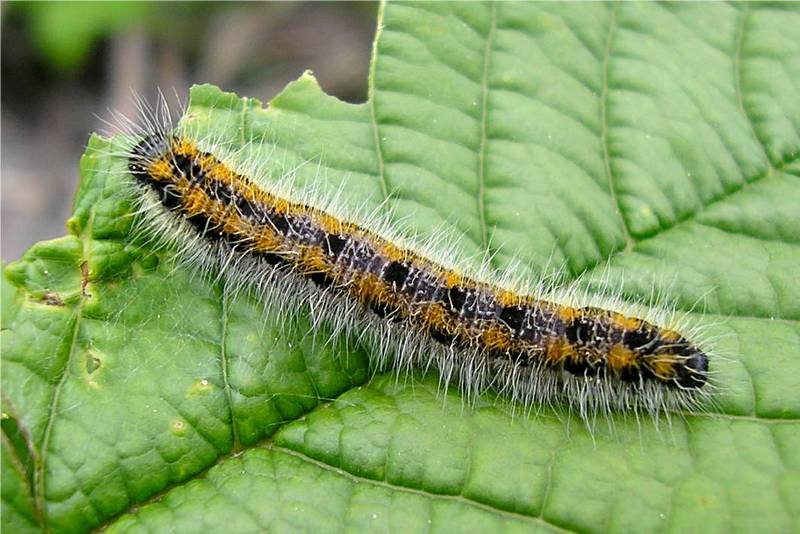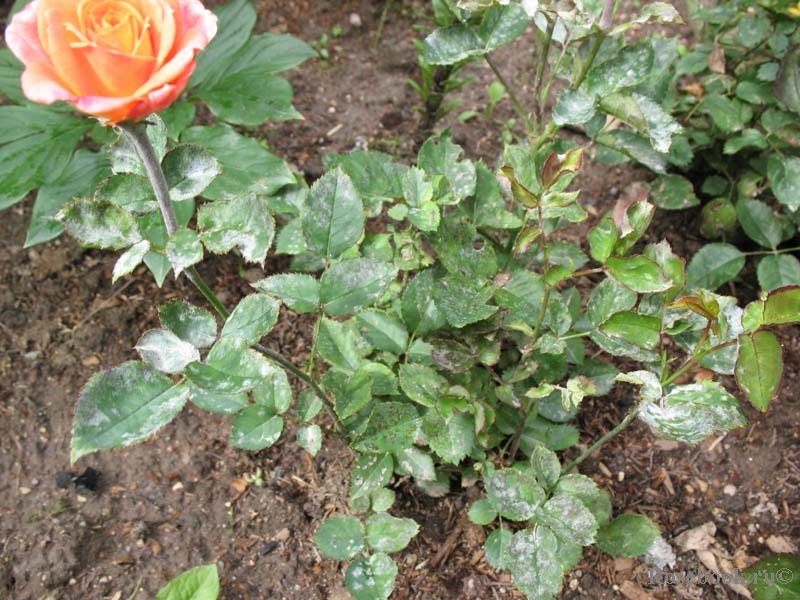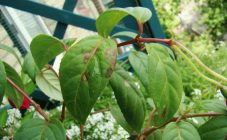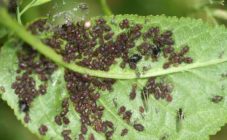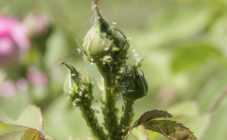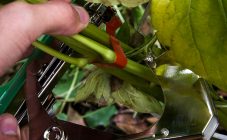Often in the garden, when growing flowers and fruit trees, plant pests appear that destroy flowers. Timely preventive measures and pest control contribute to their effective destruction.
Basic Rules
When growing plants outdoors, it is important to know about the basic rules for growing flowers to prevent pests:
- Before sowing seeds (planting seedlings), it is necessary to treat the soil with fungicidal preparations to prevent the appearance of pests and fungal diseases.
- It is advisable to break a flower garden (alpine slide) in a well-lit, ventilated place to prevent moisture stagnation and the formation of mold and pests.
- If there are fruit trees and flowers in the garden with a pronounced aroma, it is recommended to plant marigold flowers in the neighborhood. Due to the essential compounds included in the composition of the flowers, the smell repels insect pests.
- Before you spray the flowers with pest control in the garden, you need to make sure that this fungicide does not harm other plants.
- It is not recommended to take an indoor flower into a flower garden with pests, so as not to transfer them to the house. It is advisable to place the flower pot on a surface that does not touch the soil.
Flower pests
When the leaves of flowers in the garden are damaged, pests of garden plants and flowers feed on sap from the leaf plate, it begins to wither, curl and fall off. The fight should be done immediately.
The main leaf pests are:
- ¾ Caterpillars,
- ¾ Slugs,
- ¾ Aphids,
- ¾ Gorchak scoop,
- ¾ Meadow moth,
- ¾ Spider mite,
- ¾ May beetle.
Timely pest control will help to save the plant and wait for flowering.
Control methods
The most common garden flower pests are:
- Caterpillars are insects that gnaw through the leaves and stems of plants. In the place where the caterpillar stays on the leaves and flowers of the garden, a hole is formed, which over time acquires a reddish tint (in rare cases, pale pink). In case of untimely processing, the plant dies.
It is important to know which drug and why will help when a caterpillar appears on garden flowers, how to destroy them in order to prevent a recurrence. Insecticidal preparations have proven themselves well: Aktara, Rovikurt, Iskra, etc. These funds completely destroy caterpillars and caterpillar afterbirth (eggs, larvae). The whole plant and even the root should be processed in order to destroy the hidden larvae and eggs of the pest.
- White bugs (collembuli, bicycle tails) are insects of white (grayish) color 1-2 mm long, which live in the ground and are inactive in dry soil. When moisture enters (waterlogging), they are activated and gnaw at the roots of the plant. Untimely destruction of bugs leads to the death of the flower.
The best agricultural way to get rid of them is to normalize irrigation and insecticide treatment Actellik (the flow rate is 1 ampoule per 1 liter of water, double spraying with an interval of 7-10 days), Mospilan, Verticillin Zh (the product is diluted in 1 liter of water and treated twice with interval of 10 days).
- The whitefly butterfly is a small flying moth-like insect that lives and sucks sap on the underside of a plant leaf. Under the secreted waste products, the surface of the leaf is covered with a shiny sticky bloom, then a black spot (sooty mushroom) forms in the spots of the plaque. The plant begins to lag behind in development, turn yellow, leaves curl, then the plant withers completely.
Timely treatment at the first signs of damage with a solution of Actellik (1 ampoule per 1 liter of water), Confidor (a single treatment with a 20% solution is enough), Mospilan, Fufanon, Fosbecid can destroy whitefly. The working solution should be prepared, strictly observing the safety measures, do not exceed the recommended doses.
Diseases of flowers and their treatment
White bloom on the leaves and stems of flowers in the garden is a fungal disease that can completely destroy plants and infect the soil.
The most common are:
- Powdery mildew. It is characterized by the formation of white bloom on the leaves, over time, the stems and the whole plant are affected. In case of untimely treatment, the affected parts darken, dry out and fall off.
To fight, a folk method of processing is required:
- ¾ A soda solution (for 1 liter of water, 3 grams of baking soda) is completely sprayed with the entire plant and adjacent plantings,
- ¾ With a soap solution (for 1 liter of water, 20 grams of soap, 2 grams of copper sulfate) perform similar actions.
- Mold - damage by fungi when the soil is waterlogged. It is manifested by the formation of fluffy (fibrous) formations, similar to dust, on the leaf plate.
To combat, use antifungal solutions (from 5 grams of copper sulfate and 1 liter of water) and fungicides (Decis, Quadris, Teldor, Fundazol).
- Gray rot is manifested by the formation of a fluffy gray coating on the leaves, stems, which eventually turns into rot. For extermination, you need to completely treat the plants with a concentrated solution of copper sulfate or fungicides (Teldor, Fundazol, Horus, Flint Star).
- If the leaves turn yellow on the flowers, a disease such as downy mildew (peronosporosis) is possible. It is manifested by the formation of pale yellow (oily) spots on the upper side of the leaf, which then merge, turn brown, and the leaf falls off.
Since it is quite difficult to get rid of downy mildew on flowers in the garden, it is necessary to completely treat the flower garden with the Profit Gold fungicide, remove and burn all damaged plants.
- Septoriosis is manifested by the formation of small reddish spots in the center of the leaf, which begin to destroy it. The leaves begin to turn yellow and dry.
Treatment with a systemic fungicide (Vitaros, Fundazol, Horus) will help to save the flower.
- Chlorosis. A yellow spot appears at the edges of plant leaves. The main cause of chlorosis is a lack of nitrogen in the soil or stagnation of water at the plant roots.
Measures to prevent the disease are: timely application of fertilizers, thinning of plantations for better air ventilation, normalization of irrigation, prevention of waterlogging of the soil.
White bloom on flowers in the garden is a sure sign of fungal diseases. Timely diagnostics and treatment with industrial fungicides help to improve flowers and prevent re-infection. For the drug to be effective, it must be diluted with water strictly according to the instructions.
Prevention
The main measures for the prevention of pests and diseases are:
- ü Thorough treatment of the soil before sowing flowers with a solution of potassium permanganate, copper sulfate,
- ü Thinning of dense plantations for better air ventilation,
- ü Removal of weeds, diseased plants,
- ü Normalization of irrigation, prevention of waterlogging of the soil,
- ü Immediate treatment for suspected fungicides, for pests - insecticides,
- ü Planting next to flowers of marigolds, lemon balm, lavender, which repel pests with their persistent aroma,
- ü Do not leave fallen leaves on the site.
Diseases of garden flowers are easier to prevent than to get rid of. Timely pest control and adherence to preventive measures will help prevent their appearance and achieve rapid growth of flowers and their abundant and lush flowering.
